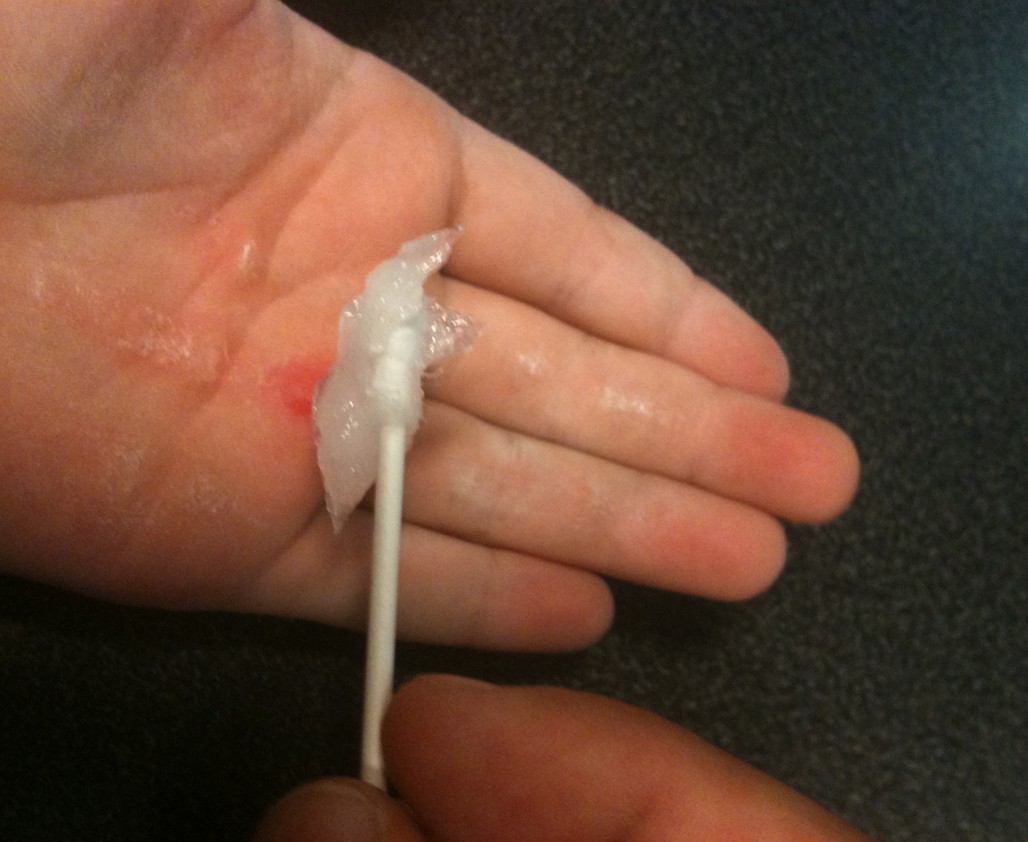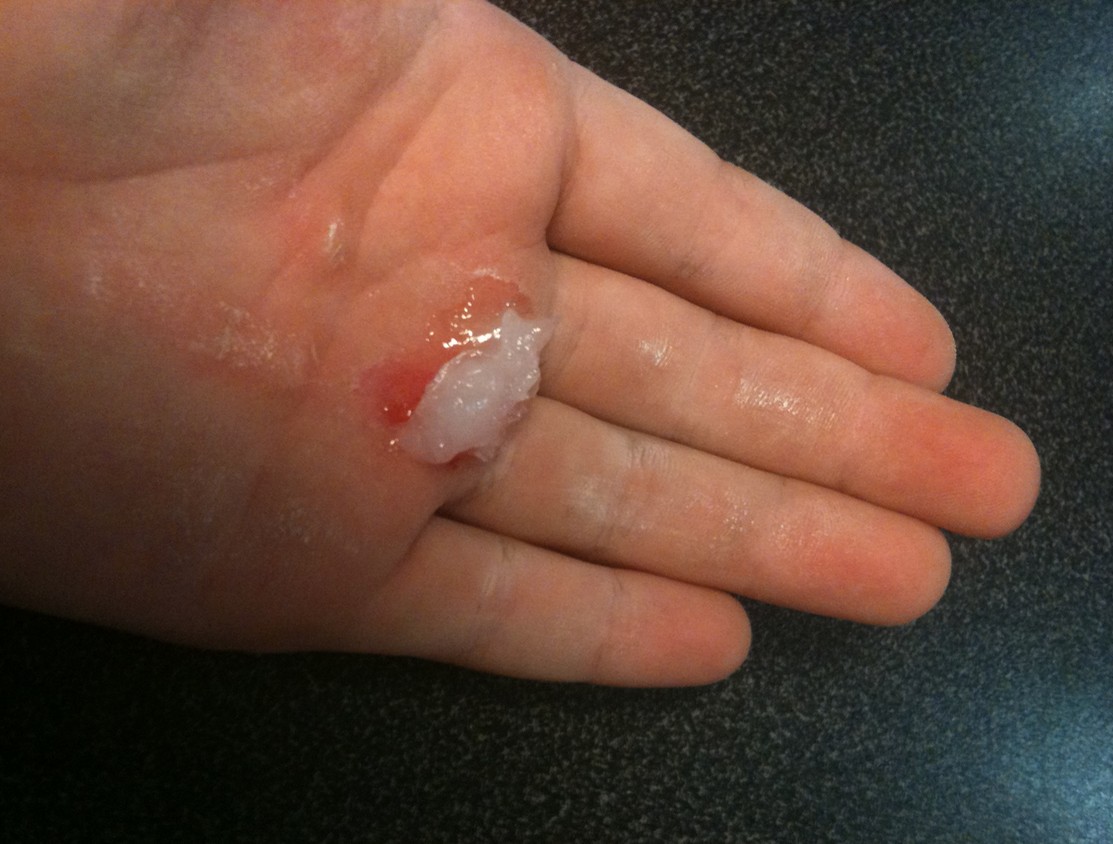What is a RIP in gymnastics?
Rips are common in gymnastics when training on bars. They are very painful and feel like first degree burn, especially when touched. Rips are simply the skin detaching from
What are the common locations of rips?
The most common location of the rips are in the palm of your hands. However, the competitive gymnasts who wear grips and wristbands will also get blisters and rips in the wrist area.
What are the type of rips?
There are two types of rips.
Un-detached - Skin is intact and a blister is formed with either clear liquid under it or a bloody blister.
Detached - When the skin is ruptured and you can see fresh (very tender) epithelial tissue.
Should I pop my blister?
I would not recommend popping a blister. If the blister is intact, your body is protecting it and healing it with the inflammatory liquids within it. You are also maintaining moisture, which is very important for healing. Most importantly, you are keeping the area safe from infections.
The blister will eventually burst (have patience) and that is when you continue caring for it as described below.
Why do rips occur in gymnastics?
There are different reasons at different stages of a gymnasts journey when rips occur. In general when we first learn gymnastics we are unsure about amount of force we need to exert in grasping the bars. Due to fear of slipping off the tight grip causes high levels of friction as well as sticks the skin directly to the bar , not allowing it to smoothly slip around the bar. The heat buildup and tightness is the cause of the skin detaching from its root. Advanced gymnastics rarely rip due to squeezing the bar only when needed and also for having built up a thicker skin layer referred to as callouses.
How can I prevent rips from occurring?
Although, with enough friction rips are inevitable and a common reality for gymnasts, there are some steps you can take to decrease the frequency of rips.
- Make sure you stop working on bars when you feel your hands staring to burn.
- Always wash your hands after bars to remove chalk from your skin, causing drying of your skin.
- Make sure you use some type of
Neosporin or
Vaseline. to hydrate your skin. They do not burn when you apply them and will hydrate the skin better than any other product. They are cheap and effective. Lotions are not effective and have ingredients that will cause the affected area to burn.
- Shave excess callouses from your skin.
How do I care for a rip once I have it?
The most important aspect of the care is to allow the new epithelium to grow uninterrupted. That can only happen when the area affected is (1) clean, (2) void of any debris, (3) not infected, (4) has smooth edges and most importantly (5) moist.
Keep the rip moist and avoid drying!
The duration of healing depends on how hydrated the rip is and if it doesn't crack. As mentioned above use Neosporin or Vaseline to keep the skin from drying and delaying healing. In most cases within 3 days you can reuse your hand if you have taken care of it. Be very generous with putting the Neosporin on your rip and keep adding during the day.. Rap it with something that doesn't allow it to absorb into the material and away from your skin.
When can I use my hands and get back on the bars after a rip?
The general rule of thumb is when the new skin has enough thickness and integrity to handle new pressure. If you have taken care of your rip by wrapping it to maintain moisture levels and have cleaned the edges for smooth transition from new skin to old, then within 4 days you should be able to get back to using your hands on the bars.
What do I do if I have a crack in my rip?
That means you did not adhere to the suggestion above and allowed the affected area to dry. This will delay your healing process and when you can reuse your hands for gymnastics purposes. You must allow the area to heal by moistening it using the Neosporin or Vaseline mentioned above.
Things to avoid once you have a rip
Avoid lotions. Lotions are not effective and have ingredients that will cause the affected area to burn.
Avoid drying of the skin. It will cause cracking and will prolong the healing process.
Avoid raised edges around the rip. You must shave the edges to prevent the drying and cracking of the edges.
What are callouses?
Callouses are buildup of newly generated skin under the new ones without shedding the old skin. In other words dead skin over dead skin that has hardened and quite frankly looks gross and feels like sandpaper.
What should I do with my callouses to prevent pain and ripping?
Callouses should be maintained on the regular basis. The best way to maintain them in to regularly shaving them so they have evenness to them. Avoid any rough edges. Unmaintained callouses will add uneven forces to the skin and can cause the tenderness of hand and eventually bigger rips.
After shaving and creating a even surface, you should hydrate using the above mentioned products.
How do I shave the callouses and edges of a rip?
Excess buildup of callouses is the cause of bigger rips when they occur. Yes, they look cool and make you feel like you have worked hard, but they should be cared for.
Prior to shaving your callouses, soak your hand in lukewarm water, for about 10 minutes. This allows the softening of your skin so when you shave it, the blade takes small amounts of skin and due to dryness, won't cut deep in. This must be done by an adult (kids do not do this on your own, ever!) Gently use the raisor to remove a small amount at a time. Avoid pushing the blade in too hard.
If you already have a rip, flattening and smoothening the edges of your rip with the same method can speedup the healing process.
Why should I not use grindstone or foot rasp?
For hands those are too blunt and aggressive. When using those tools you could put too much pressure and cause underlying skin to get loose and tender. Best solution is to take skin off the top with the least amount of irritation to the underlying skin.
Do grips prevent rips?
Grips do not necessarily prevent rips. But when you learn how to use the grips and learn how to swing better it can prevent excess heat from reaching your skin. You will rip less frequently. Although now you have the possibility to rip at the wrist where the grips and/or wristbands contact your skin and cause wear and tear.
Author: Coach Freddy Behin
Disclaimer of Liability: The information provided in this blog is for general informational purposes only. Gymnastics World, its agents and the author make no representations or warranties of any kind, express or implied, about the accuracy, reliability, suitability, or availability of the information contained herein. Any reliance you place on such information is strictly at your own risk. The views and opinions expressed in this blog are those of the author(s) and do not necessarily reflect the official policy or position of Gymnastics World. The author(s) and Gymnastics World disclaim any liability for any losses or damages in connection with the use of this blog. It is advisable to consult with a qualified professional before making any decisions based on the information provided in this blog. By accessing and using this blog, you agree to these terms.
Additionally, please read our DISCLAIMER section. 


